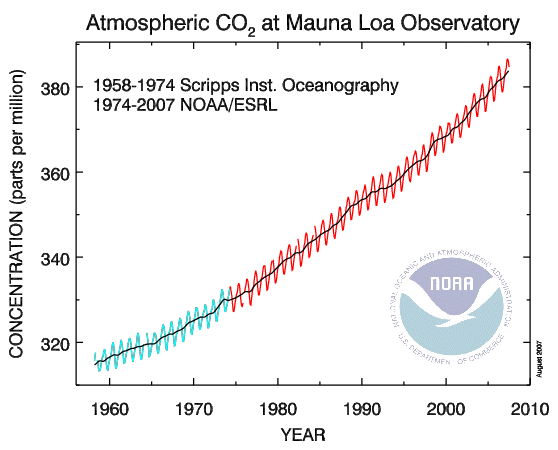🥵 Some Solutions to Climate Change
Saving the World One Degree at a Time
The world is overheating. This is not opinion, this is a fact that can be measured by satellites. You don’t even need high tech: it can be verified by anyone with access to thermometers and old notebooks.
What can we do about it, and should we do anything? It is too easy to be paralized by the possible consequences and just leave the responsibility to someone else. But there are solutions that can be implemented in the next decades. Public perception is always the first step to solving public problems. We will analyze here a few options that can help mitigate or even reverse the worst part of the incoming crisis.
🌡️ Is It Real?
First we would have to agree on the causes, and as you may know there is a huge debate in our polarized society. Not in scientific circles though. More than 35 years ago I read Asimov’s Guide to Science by the great Isaac Asimov, probably the 1972 or 1984 Spanish edition. When describing the Earth’s atmosphere he had these words:
Carbon dioxide absorbs infrared radiation rather strongly. This means that when there are appreciable amounts of it in the atmosphere, it tends to block the escape of heat at night from the sun-warmed earth. The result is that heat accumulates. On the other hand, when the carbon dioxide content of the atmosphere falls, the earth steadily cools.
If the current concentration of carbon dioxide in the air should double (from 0.03 per cent of the air to 0.06 per cent) that small change would suffice to raise the earth’s over-all temperature by three degrees and would bring about the complete and quick melting of the continental glaciers. If the carbon dioxide dropped to half the present amount, the temperature would drop sufficiently to bring the glaciers down to New York City again.
Whatever the cause of the ice ages may have been, it seems now that man himself may be changing the climate in store for the future. The American physicist Gilbert N. Plass has suggested that we may be seeing the last of the ice ages, because the furnaces of civilization are loading the atmosphere with carbon dioxide. A hundred million chimneys are ceaselessly pouring carbon dioxide into the air; the total amount is about six billion tons a year 200 times the quantity coming from volcanoes. Plass pointed out that since 1900 the carbon dioxide content of our atmosphere has increased about 10 per cent. This addition to the earth’s “greenhouse” shield against the escape of heat, he calculated, should raise the average temperature by about 1.1 degrees C. per century. During the first half of the twentieth century the average temperature has indeed risen at this rate […]
These quotes come straight from the 1960 edition, and in later editions they are very similar. Human-caused global warming is not a new theory invented by George Soros; it is just a trivial extrapolation. If we look at the concentration of carbon dioxide in the atmosphere as measured in the Mauna Loa observatory, far from all sources of industrial contamination, the trend could not be more worrying.

It is highly likely that lowering CO₂ would help alleviate global warming and other nasty effects of climate change. So let us see if we humans can do something about it using some engineering and a great deal of ingenuity.
🧑🔬 Three Solutions
Right now there is no single solution to climate change, and probably we will have to use many of them if we are to survive our own trap.
Now, before we start, let’s be clear. The first measure to mitigate climate change should be to stop burning stuff; until we do, everything we do to reduce carbon dioxide in the atmosphere will be made more difficult by the incoming gasses. But even if we stopped tomorrow and switched to 100% green energy (a mix of solar, wind, hydro and nuclear) there’s the small question of what we do with all the carbon dioxide already in the atmosphere.
We will review some solutions that can be found in the literature, and even some that anyone can think of, ranking them from more pedestrian to wildly out there. We will try to understand how much they help, and also if they have any side effects.
🎚️ Fermi Estimation
To gauge the impact of each solution we will use a method attributed to Enrico Fermi: Fermi estimation. The great physicist said that he could estimate any physical problem on a napkin by a factor of one order of magnitude, that is: his answer would not be exact but should be between 10 times and one tenth of the correct solution. This gross approximation may not seem very useful, but as a first approach to any problem it can save a lot of effort. It is legendary his measurement of the energy of the first atomic bomb by dropping pieces of paper as it detonated, and measuring their displacement in the air. (He predicted 10 kilotons, the actual yield was 21 kilotons.)

The method as we will apply it is simply to take an approximate estimation for each value within an order of magnitude (remember, between 10 times and 1/10th); and combine them in simple ways (basically addition, subtraction, multiplication and division). The solution will tend to the real value as long as errors are more or less distributed uniformly, i.e. sometimes we will overshoot, some times we will be below.
We will try to do the same with the ideas below to see if they would help. We don’t need complicated climate models to get a rough idea of each method; even if we are off by 100% we will know if our solution should more or less work. Of course, we should go with the complicated models before investing real money in the idea. Also it is a good idea to check with independent sources whenever possible. But this process of estimation is a big part of the fun!
⏭️ To Be Continued
Read on for the actual solutions:
- Part 1: 🥵 Some Solutions to Climate Change,
- Part 2: 🌲 Planting Trees,
- Part 3: 🪩 Mirror Roofs,
- Part 4: 🛰️ Space Screens,
- Part 5: 🤔 Conclusion: Taking Action.
Enjoy!
Published on 2023-06-12, last modified on 2023-06-17. Comments, suggestions?
Back to the index.